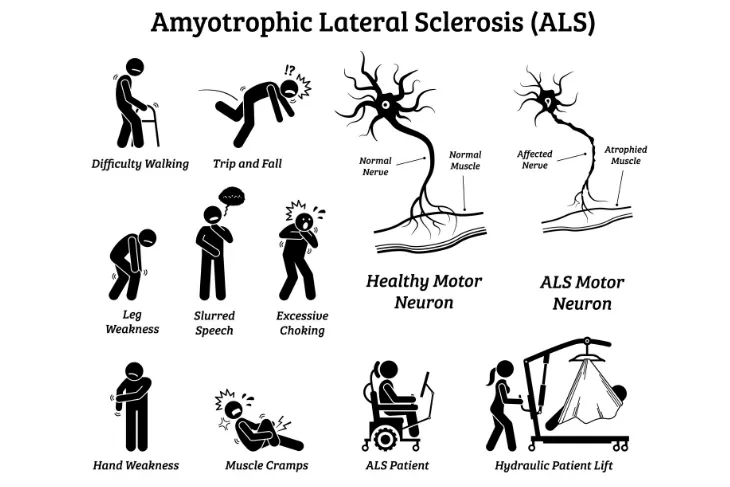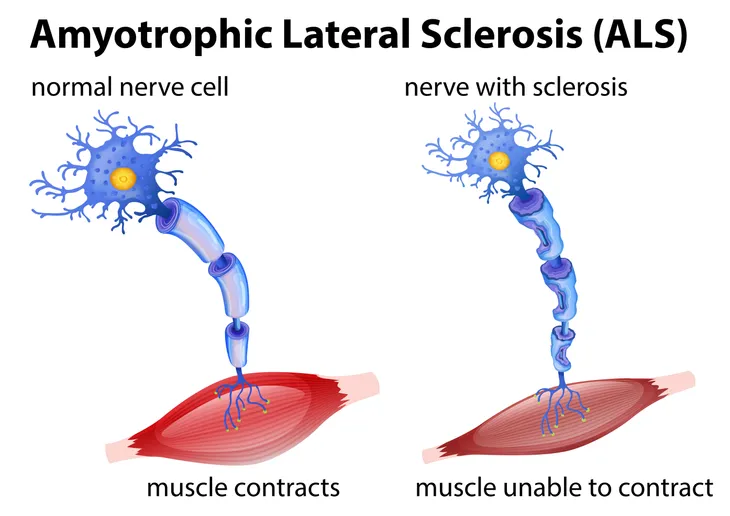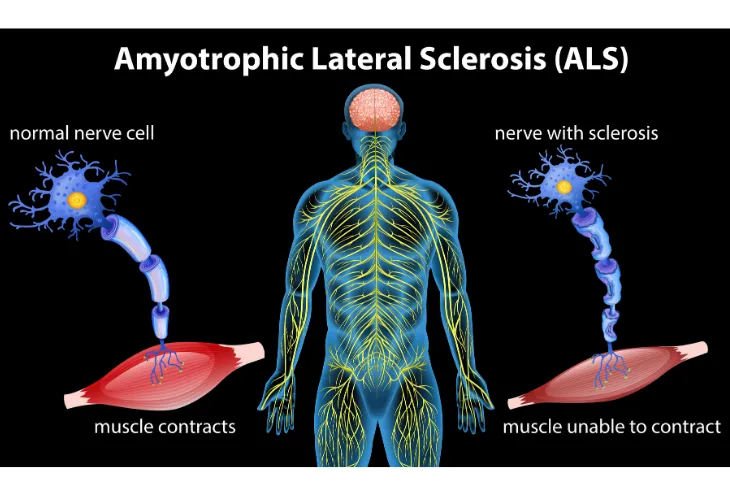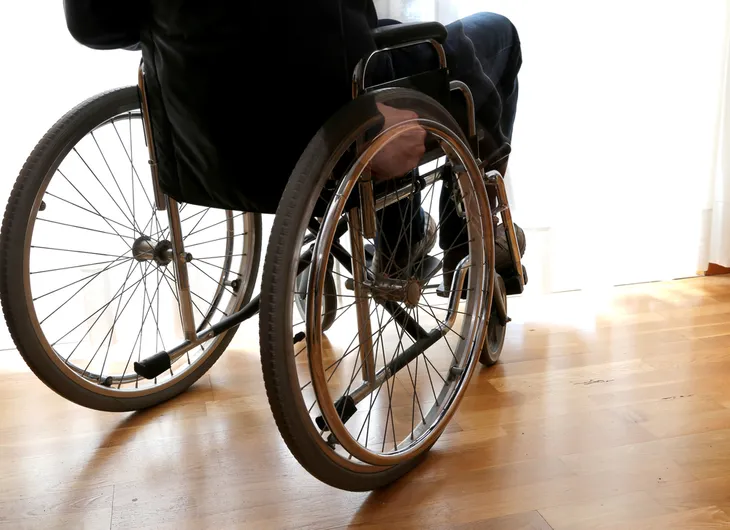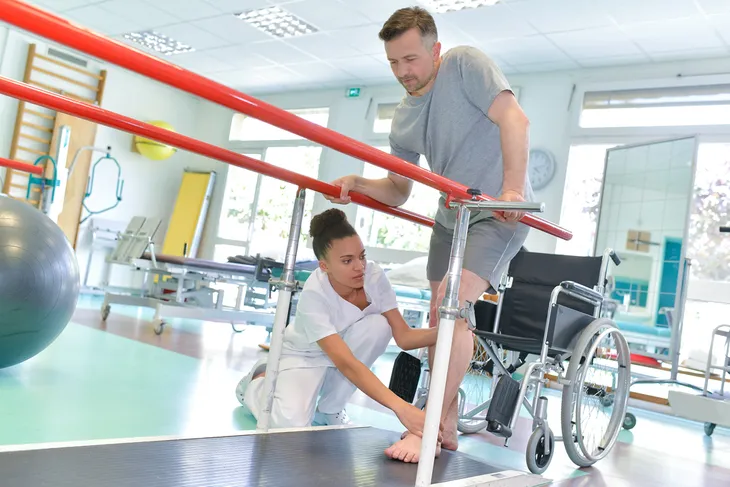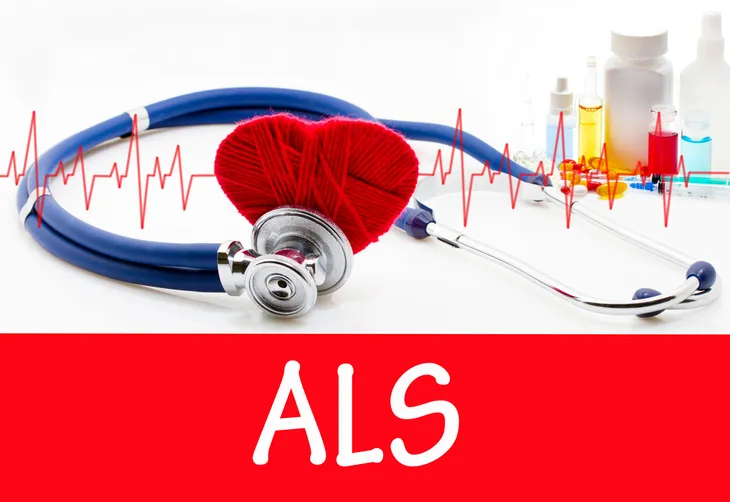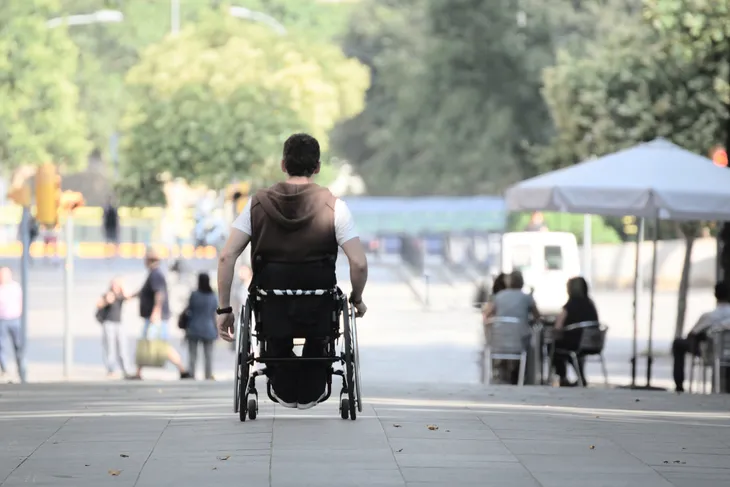You may not often hear this disease referred to often by its medical name, amyotrophic lateral sclerosis (ALS), but you’ve likely heard about it in its abbreviated form, ALS, or as Lou Gehrig’s disease, named after the famous New York Yankees baseball player who was forced to retire from it. Whatever you know it as, it’s a fairly rare condition as there are only about 5,000 new cases diagnosed each year in the country, according to John Hopkins Medicine.
There’s currently no cure for the motor neuron disease that slowly paralyzes a person, but medical science is learning a lot about it and making progress. Here’s what you should know about it…
The Physical Symptoms Can Vary
The Mayo Clinic explains that the way ALS presents itself in patients can vary from case to case, “depending on which neurons are affected.” But, there is a collection of common signs and symptoms that may show up in individuals with the disease, adds the source.
For example, those with ALS often have trouble walking and are prone to falling. They might have weakness in their hands, arms, or legs, and experience slurred speech or difficulty swallowing. Another marker of ALS is muscle cramps and twitching in the arms and even the tongue.
Breathing Problems are a Complication
While those with ALS often have trouble with coordination or speaking, those are not always the only signs. Patients can experience breathing difficulties as the disease progresses, as it can cause weakness of the respiratory muscles, explains the ALS Association.
Signs of weakened respiratory muscles include gasping for air despite no activity (or shortness of breath when you’re active), feelings of fatigue, frequent yawning, and feeling “fuzzy headed” when waking in the morning. It says that elevating your head in bed can help, as well as trying breathing exercises such as “breath stacking,” to increase lung capacity.
It Can Change Someone’s Behavior
Along with the physical symptoms of ALS, there can be emotional and cognitive impacts, explains the Mayo Clinic. It mentions “inappropriate crying, laughing or yawning” as one of the signs of the disease. The same source also explains that those with ALS can have trouble with their memory or making decisions.
Some patients go on to be diagnosed with a certain type of dementia called frontotemporal dementia, which the clinic calls “an umbrella term for a group of uncommon brain disorders” that are linked to behavior, personality, and language. This form of dementia is sometimes misdiagnosed as Alzheimer’s disease but can occur earlier in life (between 40 and 65).
It Can Be Hereditary
ALS Canada notes there are actually two forms of ALS, sporadic ALS and familial ALS. The latter one can be passed from a parent to a child, with up to 10-percent of all cases falling into this category, according to the source.
The sporadic version can affect anyone regardless of background or age, although it’s most common among patients aged 40 to 60. In either type, the source says about 30-percent of all cases involve bulbar ALS, meaning muscles in the face and neck are affected first before other muscle groups become paralyzed.
There are Other Possible Factors
Aside from cases that are inherited, doctors aren’t entirely sure why some people develop ALS, according to the Mayo Clinic. It does say the risk increases with age, and slightly more men than women develop the disease prior to age 65 (but is not a factor after age 70).
The source adds that there could be environmental factors that contribute to risk, such as smoking, especially in post-menopausal women. It also says there’s some evidence to suggest exposure to lead could be linked, although it admits “no single agent or chemical has been consistently associated with ALS.” Those who served in the military are also considered higher risk, but it’s not entirely clear why.
It’s Sometimes Confused With Other Conditions
There are a number of other conditions that ALS could initially be confused with, including multiple sclerosis or Parkinson’s disease. The National Institute of Neurological Disorders and Stroke says there’s no single test that can provide a “definitive diagnosis of ALS,” and the diagnosis of ALS often involves a series of exams to rule out other diseases.
While in the early stages it can be harder to pinpoint from other conditions, a physician will conduct neurological exams at “regular intervals” following the initial assessment to determine the progression of muscle weakness or atrophy that are markers of ALS. The source says that electromyography (EMG), which detects electrical activity in muscle fibers can also be a diagnostic tool. Other tests can include a nerve conduction study (NCS) or magnetic resonance imaging (MRI).
There are Therapies That Can Help
The National Institute of Neurological Disorders and Stroke outlines two therapeutic approaches to treating ALS, namely physical therapy and speech therapy. It notes special equipment and low-impact aerobic exercises (including walking and swimming) can be beneficial to unaffected muscles, which also help to stave off fatigue and feelings of depression.
Meanwhile, as the disease can affect the ability to talk, ALS patients can work with a speech therapist “who can teach adaptive strategies to speak louder and more clearly,” notes the source. They may also be able to recommend other approaches as the disease progresses such as computer-based speech synthesizers that use eye tracking technology.
Approved Medication Options
The ALS Association says there are currently four drugs on the market that are FDA approved, one of which can extend a patient’s life by about 3-months.
The other medications can be helpful for addressing outbursts (such as laughing or crying) associated with ALS, which is known as the pseudobulbar affect. There is one medication that was approved in 2017 and was originally used in Japan to treat stroke. This particular medication can slow the decline of physical function in patients with ALS by 33-percent. The most recent medication (which also comes in liquid form) joined the approved group in 2018 and is an alternative for patients with swallowing problems.
Other Possible Remedies
Healthline explains that, aside from the approved drugs, there are others not specifically for ALS that can provide some relief for patients. For example, it notes diazepam, which is used to treat anxiety and alcohol withdrawal, can help reduce cramping and spasticity.
The source adds that nonsteroidal anti-inflammatory drugs can be used for pain management. They include drugs such as ibuprofen, that are available over the counter. A doctor may also turn to an anticonvulsant or a tricyclic antidepressant for pain relief.
Some Patients Live Years Beyond Diagnosis
While the outlook for those with ALS is not rosy, about 20-percent of patients live 5-years or more following diagnosis, explains Healthline. It adds that 10-percent of patients go on to live for 10-years or more.
The most common cause of death for patients with ALS is respiratory failure, adds the source. However, with the right medications and treatment approaches, patients can improve their quality of life and “live happily and comfortably for as long as possible.”

